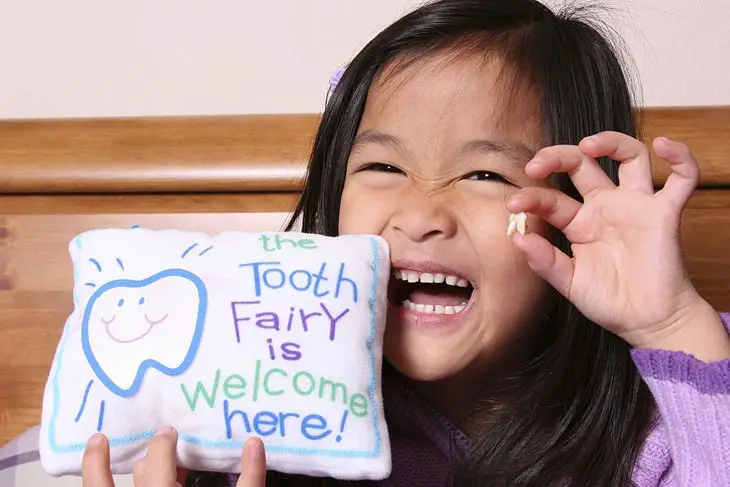Many American youngsters have heard of the tooth fairy, who swaps money or toys for teeth left under beds.
Tönn vintri (Iceland), Tannfe (Norway), Tandfe (Sweden), and Zahnfee (Germany, Switzerland, and Austria) are just a few of the different names for the tooth fairy.
We are fortunate to have children (with lost teeth) worldwide, and it would be nice to share some additional unique tooth fairy alternatives with you.
The following information will take you through the images of tooth fairies from around the world!
Tooth Fairy Ideas & Traditions

In Western and Western-influenced cultures, the Tooth Fairy is a mythical early childhood character. According to tradition, when a kid loses a baby tooth, they should leave it beneath their pillow or maybe on their bedside table, and the Tooth Fairy would visit them while they sleep, replacing the missing tooth with a modest reward.
The origin starts with a tradition in Northern Europe called “tand-fé”, or tooth fee, paid when a child lost their first teeth.
This practice is documented in manuscripts dating back to the Eddas (about 1200), the earliest written record of Norse and Northern European traditions.
Children’s teeth and other objects belonging to children were thought to bring good luck in combat in Norse culture, and Scandinavian warriors put children’s teeth on a string around their necks.
Recommended Tooth Fairy Alternatives
Leaving a tooth under a pillow for the Tooth Fairy or another imaginary character to collect is a ritual followed in many nations. Here are 4 fascinating tooth fairy replacements for you to know:
1. Mouse In The House
The Tooth Fairy even has whiskers and a tail in several world places. So there is, indeed, a Tooth Mouse!
It’s known as La Petite Souris in France, which translates to “the little mouse.” This tiny and sly mouse hides behind pillows at night. It trades the teeth for cash or goodies.
Raton Pérez, a tooth-loving mouse, may also be seen in Spanish culture. This mouse collects teeth throughout Spanish-speaking nations, albeit his name may alter somewhat from one to the next.
In Argentina, instead of putting their tooth under the pillow, children place it in a glass of water. The mouse not only gets the tooth, but he also drinks the water. It’s thirsty work picking up all those teeth!
2. Throw The Tooth In The Air
Many children in the Middle East do not leave their teeth for a mouse or a fairy. Instead, they go outside and toss their tooth up in the air, aiming towards the sun.
This is supposed to hasten the growth of new teeth. They may also be even more powerful than previously.
In Japan, people also toss their teeth. Bottom teeth are flung into the air. The upper teeth have been thrown on the ground. In this manner, they mimic the direction in which the teeth develop.
A good, straight throw is believed to bring in new straight teeth.
3. Tooth On The Roof
Throwing teeth is a common pastime in many areas. But, in certain places, children strive for the sky.
Children in Greece, Botswana, and Sri Lanka toss their teeth on the roof. They do the same thing in China and India.
However, they only flung their bottom teeth. The upper ones are placed somewhere low, such as under the bed or beneath the floorboards.
The tooth is hoped to be taken by a bird, squirrel, or mouse. This is believed to ensure that the new tooth grows fast.
4. Keep That Tooth Hidden
Not everyone wants to give their teeth away to animals or fairies. If a bird steals your baby teeth, it is considered bad luck in Nepal.
As a result, the children hide their teeth in secret places. Malaysian children often bury their teeth in the dirt. They see it as restoring the tooth to its natural state.
Parents in Turkey try to influence their children’s future occupations by burying their children’s teeth in various locations.
Burying the tooth near a hospital is supposed to help the child become a doctor. Alternatively, burying it on a school playground inspires them to become teachers someday.
Soccer pitches are popular since everyone aspires to be a great player!
Children who lose their teeth in Mongolia and a handful of other Central Asian countries frequently do two things. One alternative is to bury the tooth beside a tree in the ground.
The concept is somewhat abstract in this case. The notion is that by burying the tooth beside a tree, the new tooth would grow in with roots as strong as the tree close to which the baby tooth was buried.
FAQs
1. What Do Children In Greece Do With Their Baby Teeth?
When children lose their baby teeth in Greece, it is common for them to make a wish for strong adult teeth while throwing their lost baby teeth onto the roof, which is supposed to bring good luck.
2. What Do The Spanish Call The Tooth Fairy?
Ratoncito Pérez (aka Perez the Mouse, the Tooth Mouse, el Ratón de los Dientes, or el Ratón Pérez) is a popular figure in Spanish-speaking countries (Mexico, Guatemala, Chile, Peru, Spain, Uruguay, Argentina, Venezuela, and Colombia).
The difference is that they replace a child’s lost baby tooth placed under their pillow with a gift.
Conclusion
When a child loses a tooth, it may be an exciting time for them. That’s why parents want to have some fun with it by becoming creative with what the Tooth Fairy leaves beneath the child’s pillow. Depending on the cultures, each region/ country has its own stories for the tooth customs.
This post mentioned 4 different customs that can be considered the tooth fairy alternatives, which was pretty amazing.
You can share them with your family and friends, or maybe your children, to surprise and encourage them that there’s nothing to be scared of when they lose their teeth. Good luck!
